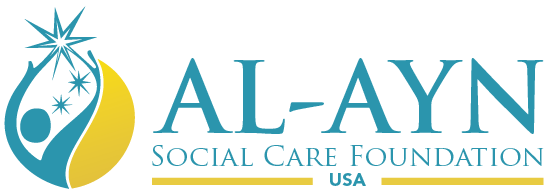Vital Medical Equipment
$60 can help to ensure our medical facilities contain essential clinical equipment providing vital care for orphaned children in need of treatment.
 Donate
Donate
Surplus
Deductions
Total amount subject to Khums $0
Khums Due $0
Sahm al Imam to be paid $0
Sahm al Sada to be paid $0
This Ramadan, countless orphaned children and their families across Iraq, Afghanistan, and Ghana are in urgent need of support. Your donation to our Ramadan Relief Fund can provide vital care —such as essential medical aid, financial assistance and safe housing to safeguard their health and well-being.

$60 can help to ensure our medical facilities contain essential clinical equipment providing vital care for orphaned children in need of treatment.

$200 can contribute towards the construction of the Shajarat Tuba Complex in Karbala, which will offer medical, educational, and psychological support to orphaned children.

$313 can contribute towards the construction of a housing complex in Iraq offering a stable environment where orphaned children, and their families can rebuild their lives.

$625 can cover the cost of building one square meter of a Luminous Stars center, helping to provide thousands of orphaned children with comprehensive care.
Al-Ayn’s 11 Luminous Stars Centers across Iraq provide over 100,000 orphaned children with expert care, including medical treatment, vocational training, psychological support, and education. This is in addition to building 157 homes and 407 housing units for orphaned children across the country. Click here to learn more about our Sadaqa Jariya projects in Iraq.
In Afghanistan and Ghana, we’re also empowering over 1,000 orphaned children in need, lifting them out of poverty with essential services and care.
This Ramadan, your support will help us expand our reach—building more Luminous Stars Centers in under-served areas such as the Shajarat Tuba Complex in Karbala, providing more homes, and ensuring even more orphaned children receive life-changing care.
With over 19 years of experience, Al-Ayn guarantees that your donations are processed swiftly, Shariah-compliant, and delivered to the right beneficiaries. Stay informed with regular updates through our newsletter and social media.
If you have any questions or issues on how to fulfill your Ramadan donations please contact us today.

Al-Ayn has supported over 195,000 orphaned children

133,498 treatments have been provided to orphaned children

Al-Ayn has initiated 224 Sadaqa Jariya projects

Al-Ayn has built 11 Luminous Stars centers in Iraq
Al-Ayn is honored to have the support of Al-Sayyid Al-Sistani, who has granted us an Ijaza (authorization) to accept religious dues such as Sadaqa, Khums, and Zakat.
This sacred trust enables us to serve orphaned children with your contributions, ensuring your religious obligations are fulfilled with confidence.
Al-Sayyid Al-Sistani regards donations to Al-Ayn—through Sadaqa Boxes or online—as a transfer of ownership to him on behalf of the orphaned children. Contributions are thus recognized as Sadaqa Maqbootha (Received Sadaqa), with rewards earned immediately.
The best way to earn Sadaqa Jariya (ongoing charity) this Ramadan is by investing in acts that provide continuous benefit to others. This can include donating towards our projects in Iraq, such as our:
At Al-Ayn, our Sadaqa Jariya projects benefit orphaned children and their families for generations.
Yes, we offer multiple ways for you to donate in addition to our website, including bank transfers, checks, and through our Mobile app. You can choose the method that suits you best. If you prefer to donate via bank transfer, please click here.
For inquiries, you can call us on 1-877-NEW-HOPE or email info@al-ayn.org. To find out how to visit one of our branches, please click here.
Zakat Al-Fitra is a form of charity given by Muslims in Ramadan, before the Eid al-Fitr noon prayer. It is obligatory for every Muslim who is able to afford it. The amount is usually calculated based on one sa’a (3kg) of a common staple food in your country (e.g. rice).
If you sponsor an orphaned child through Al-Ayn, according to a religious ruling, it is obligatory for sponsors to pay Zakat Al-Fitra on behalf of the orphaned child they are sponsoring.
Fidya is a compensation for not completing an obligatory fast for a legitimate reason and 750 grams of food (rice) has to be given to a needy person. Al-Ayn has calculated this amount as $1.25 for each day that a fast is missed.
Kaffarah is a payment that needs to be made when committing certain acts, such as deliberately missing a fast with full knowledge of its obligation, or breaking an oath. The Kaffarah amount for deliberately missing a fast is 750 grams of food (rice) to 60 poor, needy people, equal to 45kg in total. Al-Ayn is authorized to collect Kaffarah and has calculated the amount as $60 for each day that a fast is deliberately missed or broken.
Zakat becomes applicable on particular categories of wealth, after it reaches a minimum level, called the nisab.
There are different jurisprudential opinions as to what Zakat is payable on, and how to calculate it. You are advised to consult your local scholar to calculate the amount of Zakat you should pay.
You can also contact us with specific questions about calculating your Zakat and we can arrange for a scholarly response.